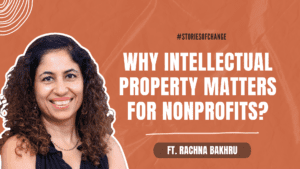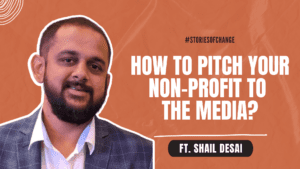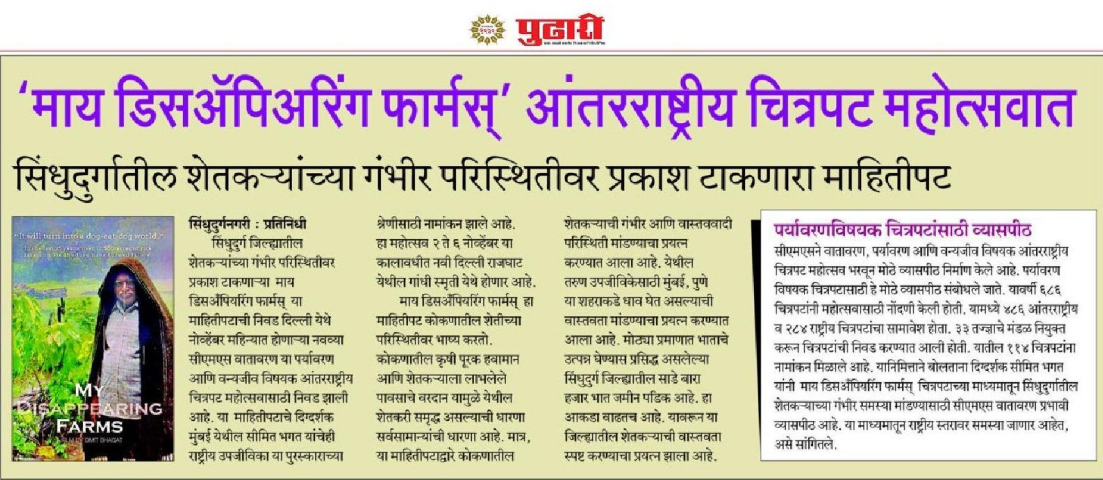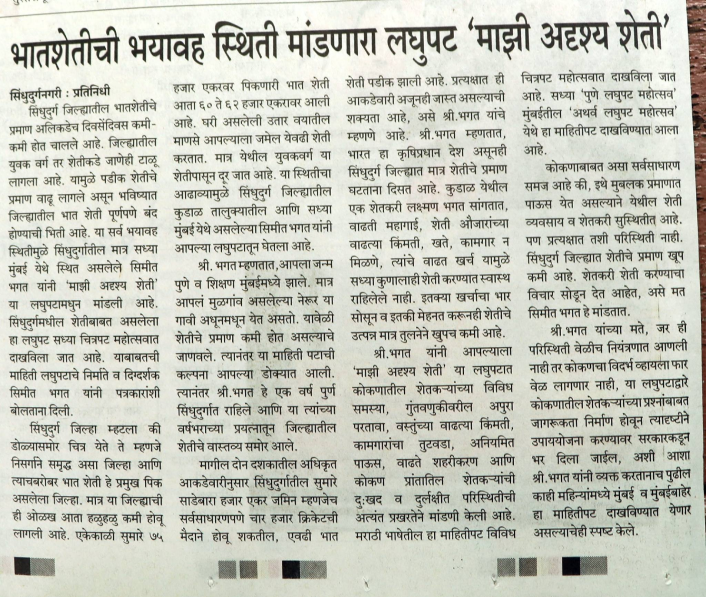In this episode of ‘Stories of Change’, Anupama shares her insights on why audio is a uniquely powerful medium for telling compelling stories. She recounts some of the impactful audio stories she has worked on, highlighting their success and shares about the common challenges faced in producing audio stories and how to overcome them.
Anupama is an audio documentary producer and Editor Podcasts – Newsreel Asia. She specialises in immersive sound-rich, character-driven narrative audio stories. She has reported and produced audio stories for Indian, British, American and German media organisations. Her audio stories have been published in the Stanford Social Innovation Review, The Deutsche Welle, Dark n Light Zine and the American Geophysical Union.
If you’re part of a social impact ecosystem looking to amplify your message or simply interested in the art of audio storytelling, this episode is packed with valuable insights and practical advice.
Transcript of the Episode:
Simit: Hello. Thank you so much for agreeing to be on this podcast. It’s really a pleasure to have you.
Anupama: Thank you, Simit.
Simit: Personally, I have been a documentary filmmaker and we at Simit Bhagat Studios use different forms of creative mediums to tell a story.
In your case, you use a very different form, which is audio as the key form of storytelling. I would love to know more from you about using audio as a form of storytelling.
Anupama: So, actually I started off listening to audio as an audience. First of all, I wasn’t really analysing it for how effective a medium it is and how it works. I genuinely enjoyed listening to radio, which is the genesis of podcasts. Then of course, moved on to podcasts, which became quite easily available, via different podcast apps and everything.
Gradually as I started studying this medium, what I realised from hearing from people is that it basically offers a direct connection. By that I mean that if I am driving somewhere or if I am booking somebody, if I’m listening to a podcast, it’s as if that person is directly talking to me, you know, like a friend or like somebody who’s telling me a story.
“Audio form of storytelling offers a direct connect with the audience”
And at the same time, I don’t need to be sitting in front of the screen. It is a very personal medium.
That is, it talks directly to the person who’s listening and feels like they are just listening to somebody speak as they’re doing their work. Somebody who’s sitting in the room telling them about what’s going on. So, it is a kind of a personal medium.
It also leaves a lot for you to remember because you are not concentrating on any visuals. Also, it’s a very old medium, right? I mean, to go back to the days when your grandparents told you stories. When I travelled in trains in Bombay, I would always eavesdrop and it’d be so funny, you know, to eavesdrop on some conversations that were happening. It was those days of no cell phones and everything. So, yeah, it kind of stays with you.
Simit: I haven’t really had the chance so far to work specifically or use audio as one of the mediums as far as storytelling is concerned. The closest that I have come to is when we were doing a video on Gender-based violence for a Mumbai-based nonprofit. We used illustrations on top of the voiceover. And it came out really beautifully.
That’s the closest that I have come to creating an audio story. But you have been exploring this medium as a journalist and as an audio storyteller.
Could you share maybe some of the projects or stories that you have worked on and something that has really stood out for you?
Anupama: One thing I found audio very useful in is telling the stories of people who don’t want their identities to be revealed. If the person chooses not to reveal their identity, it’s a very protective medium. We can even change the tonality of the voice if needed, if that person feels that someone might recognise their voice.
“Audio stories can ensure privacy when subjects are not comfortable revealing their identity”
This way, you still have the person telling the story, but you can make sure that their identity is not revealed. This is great for people who have suffered sexual violence or domestic violence. I recently did a story of someone who was HIV positive. Even the photos I took of her didn’t reveal her face, which I used as a thumbnail. This gives them relief and they are willing to talk to you more openly about it, using it as a form of telling journalistic stories.
I found it to be very, very difficult. Not the medium, but the whole idea of storytelling. It requires you to be a good person. For someone to trust you with their story and then tell it in a truthful way, you have to be willing to open yourself up to your subject.
Why would someone who suffered sexual violence, or someone who is maybe Dalit, or a drug addict, want to tell you their stories? Everyone knows that this person is there for publishing the story, but what makes them want to like you and tell their story? That part I found very difficult, and I had to rethink and rework the way I did my stories.
As a business journalist or a regular journalist, you call someone, get a quote, write it out, and send it off. It’s a little matter of fact. Here, you have to be willing to spend time with them, listen to what they have to say, and engage them to tell it in the most concise way possible if they tend to ramble.
But how do you do that in a way that doesn’t hurt them? I found the idea of storytelling, tracing the life story of someone with its highs and lows, very difficult. The audio part was not so much the problem. The challenge was getting someone to trust you and tell you their story.
Remember that this is supposed to be for 20 or 25 minutes, so you have to talk in a way that allows that person to reveal a lot of things and not just say yes or no. You want them to describe things. That requires practice and is true for anyone looking at storytelling.
I personally love the medium because I love immersive sound. In audio, just like in video, there are different ways of using it. You have documentaries, fiction, short documentaries, news, etc. Similarly, with audio, there are different formats. What we are doing right now is like a chatter cast, just two people talking.
“I personally love the medium because I love immersive sound”
I love the medium of going on the ground, recording sounds, and taking people over there, kind of eavesdropping. Capturing immersive audio the way I want, and writing it in a literary way that engages the audience and makes them feel they are there and listening to a story.
One particular story that I’m very fond of is the interview I did with a non-speaking autistic person. He speaks with a device, typing it out slowly. Hearing from him about how he communicates with his parents was very touching. He also typed out poetry, which was included in the book.
More recently, I did a story with an HIV positive woman who got married. I attended the ceremony and recorded everything, from her make-up to the songs and her friends telling her not to cry. These small conversations are very exciting and useful in telling a story.
Simit: I heard the last one, the HIV story you just mentioned. I heard a part of it after we spoke. It felt like being part of that space.
I also heard one of the series you did for the SELCO Foundation. Not many organisations in the social development space are using audio as a form of communication. They struggle to put themselves out there using different, impactful mediums.
Do you think organisations in the social impact space can use audio to communicate more effectively?
Anupama: Yes, like we discussed before the podcast started, it’s quite a democratic medium. As long as someone helps you figure out the format, there is a lot of scope for extremely engaging and grassroots-level stories to be told. It can move out of the studios. The beauty of our country is the songs, music, traffic, and conversations in local languages and dialects.
Not-for-profits can create something low-cost and show their funders what they are doing and what people on the ground are saying. Many NGOs already do a lot of travel and reporting. All you need is a smartphone. With a good smartphone and an audio recording app, you can record a few things. It can seem overwhelming to have so much audio and plan a story, but it’s like a blog in audio form.
“Audio stories can be an economical way for not-for-profits to showcase their grassroots work to funders”
Anupama: Like I said, it’s a very personal medium, so you can use it in a variety of ways. For instance, I know an organisation wanted to use audio as a training medium for many of the people they work with. So that is also a form you can use.
Some of these podcasts can be educational material that you can use for training, for instance. It’s a low-cost medium that can be used for training. You can use your smartphone to record these days; you can even mix it on your phone. It’s a very bare minimum kind of podcast, but it allows you to reach out to your audience directly because it is a personal medium. Secondly, you can also use it as a form of brand building.
“Audio stories can be used as a form of brand building”
Alternatively, it can be a narrative form of a podcast, where you take your listener through a success story or even a failure. In the development space, people often don’t like to talk about their failures. Having something offbeat, which catches people’s attention and is honest, is helpful.
So, it can be used for training, for brand building, and to connect with an audience so they understand the kind of work you do. It can be journalistic. It has a variety of uses, and particularly for rural areas, you don’t need much to play audio. You don’t need a screen or other equipment. If you have a Bluetooth speaker, you can play something aloud for training. It’s fairly mobile and a nifty, low-cost medium.
Simit: From a tools point of view, if an organisation wants to incorporate this and train their staff to record these stories, what tools are needed and how does one get started?
Anupama: Usually, training doesn’t cost much. We at Newsreel Asia conduct training programs. But sometimes the organisation can’t afford to pay the 2,000 rupees we charge, so it is often done for free. There are things to keep in mind when recording audio. How do you record good quality sound when you are outdoors? How do you save the data? You need to be organised about how you record and catalogue the space and data.
You also need to make the person comfortable. Although audio is easier than video, as someone is more conscious with a camera in their face than with a mic in their mouth, you still need to tell them to ignore the mic and just chat. Otherwise, you’ll get a very strange response with people being very conscious.
You just need a phone. A smartphone is good enough. If you want to transfer the data and keep it safely, transfer it to your computer. To mix the audio, you need some knowledge of a digital audio workstation. I am self-taught. A lot of this information is available online. You can Google or search on YouTube and find amazing young people teaching you the tricks of the trade.
The world is at your fingertips. If you want to do this, you can find answers to a lot of these technical questions online. Beyond a smartphone, if you want a better device, a Zoom H1 is a very nifty device. It costs about 8,000 rupees and allows you to record 3 hours of audio. These days, a smartphone is really good enough. I’ve used my smartphone to record audio when my battery ran out, and it was perfectly fine.
The tools are the smartphone, and if you want to think about getting a mic and other gadgets, remember that the more you focus on the gadgetry, the less it becomes about the story. You can work with just a smartphone. That is more than enough to take your first steps into audio, and more than enough for an organisation.
People don’t notice good audio quality, but they definitely notice bad quality. When recording audio, keep a few things in mind: turn off fans, close doors, and consider the distance of the mic from the mouth. It all comes with practice. The audio community is quite interesting. There are always contests and opportunities to practise, sometimes even with feedback on your audio.
Simit: Sound design is best when you don’t notice it. That’s the best sort of sound design.
“The best sound design is when the audience doesn’t realise the craft behind it”
When organisations in the social space explore audio storytelling, one important factor is impact. With limited resources, they need to be mindful of how they invest those resources.
How do you look at impact in audio storytelling, and how do you measure it?
Anupama: Impact is fairly easy to measure because podcast hosting platforms provide analytics. They tell you how many downloads and listens you’ve had. The challenge is telling people that your audio story is out there and actively taking measures for listenership.
With Newsreel Asia, our stories are not day-to-day breaking news but feature stories with a longer shelf life. I find these stories useful for academic institutions as educational material. Another way to ensure impact is to reach out to audiences proactively, looking beyond your immediate cohort.
“Nonprofits can use their audio stories as a source of educational material”
Listening to programs like Planet Money, you realise that interesting content can appeal to a wide audience, not just specialists. So, I feel that also helps maintain your audience.
Simit: This has been a fantastic conversation that opened my eyes to new avenues.
Anupama: I’m glad. I hope I had something valuable to share with your audience. There are lots of resources available, like the Third Coast Festival, with so much information readily available. You can learn how to produce podcasts and hear how others think through their productions. And Third Coast is a festival for someone who loves audio and wants to take the first few steps. I would totally recommend it as a learning resource.
Simit: Yes, we will include that in the podcast description. It’s been fantastic speaking to you. Really a pleasure.
Anupama: Same here, Simit.










